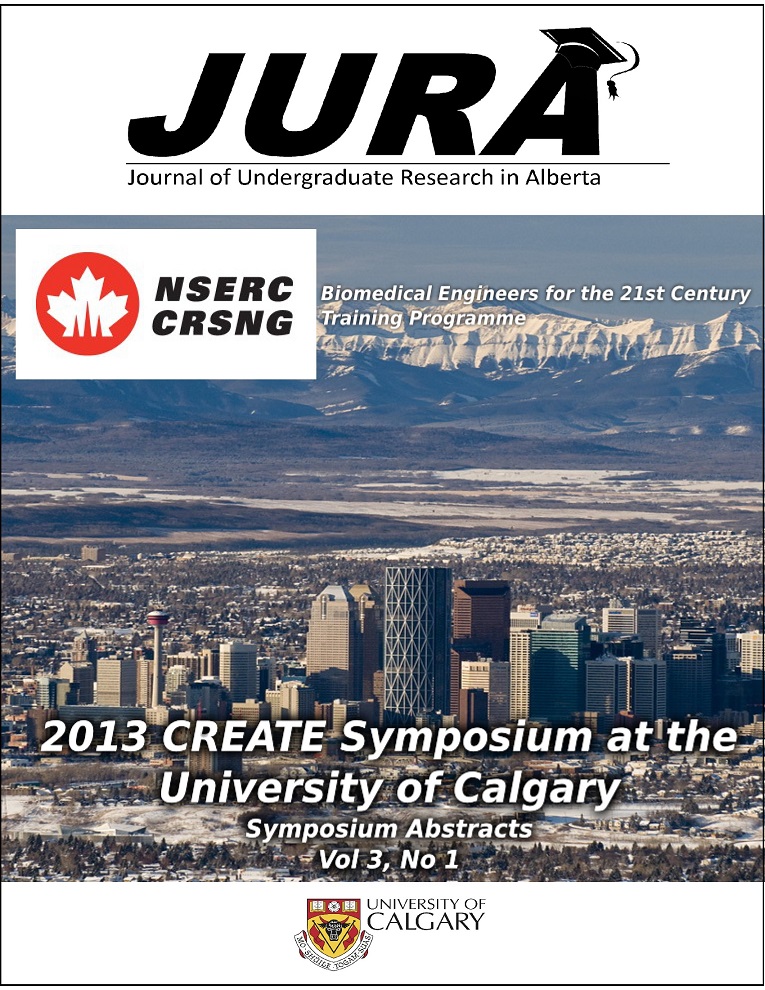Exploring the properties of titin spring elements in whole myofibrils
Keywords:
Titin, viscoelastic, myofibrilAbstract
INTRODUCTION
Titin is the largest protein in animals and is primarily found in the sarcomeres of myofibrils. Titin acts as a spring anchored by actin at the z-line and holding myosin filaments centred in sarcomeres. Titin has long been accepted as a major contributor to passive force in myofibrils. The most ground-breaking work on titin was done by Kellermayer et al. who found that at short and long lengths titin behaved elastically while at intermediate lengths it behaved visco-elastically which they attributed to the unfolding of Immunoglobulin (Ig) domains (1).
While many studies have examined the passive stretching of whole myofibrils, there is little examining titin’s properties within its natural environment, the sarcomere. Because titin contributes up to 95% of the passive force in myofibrils, its properties are reflected in whole myofibrils (2). The purpose of this study was to test the idea that titin is elastic at long length when Ig domain unfolding and refolding is prevented.
METHODS
Muscle tissue was collected from rabbit psoas. Connective tissues were digested and myofibrils were mechanically separated. Isolated myofibrils were then attached to a rigid glass needle at one end to control lengths, while the other end of the myofibril was attached to a silicon nitrate lever with a stiffness of 68nN/um to measure the force.
Myofibrils were set at a length of 2.7um/sarcomere and then stretched at 0.1um/(sarcomere x seconds) to 4.7um/sarcomere. The myofibrils were then held at that length for 120 seconds to allow Ig domain unfolding to reach a steady state. The myofibril was the stretched and relaxed in 10 cycles of 0.5um/sarcomere at a speed of 0.1um/(sarcomere x seconds). A total of 9 myofibrils were tested and analyzed.
RESULTS
All nine myofibrils showed the same consistent behaviour (Figure 1). During the initial stretch force rose as length increased, and then gradually decreased during the 120 second stress relaxation. During the ten stretch-relaxation cycles a visco-elastic behaviour was observed as each cycle showed a small but distinct hysteresis. The force during stretch was always greater than the force during shortening, and forces were at a near steady-state for all ten cycles. It should also be noted that the force during the first relaxation cycle was much lower at the same length as the relaxation of all of the subsequent cycles.
Figure 1. Graph typical of the tests, with force graphed versus length. A) initial stretch. B) the stress relaxation as force decreases and length increases over 120 seconds. C) shows the cycles of stretch relaxation in that order.
DISCUSSION AND CONCLUSIONS
The results that we observed contradict our initial hypothesis as the elastic behaviour described by Kellermayer was not observed. This could be due to some unforeseen myofibrilar protein that contributes to the stiffness of the myofibril, however due to the long length, high force and quick period of recovery of stiffness seen in the myofibril other sarcomeric protiens are likely not responsible. We can also rule out refolding of Ig domains as work done by Kellermayer and our lab in the past corroborates their finding that this occurs slowly at shorter sarcomere lengths with little to no passive force. The work done by Kellermayer is very sound however and cannot just be dismissed. Therefore we are led to believe that this visco-elastic behaviour observed at long lengths in myofibrils is due to titin properties that present themselves in whole myofibrils. This may be caused by quick interactions between titin and other myofibrilar proteins that leads to a increase in stiffness at long lengths and high forces.
REFERENCES
1. M. S. Z. Kellermayer, S. B. Smith, H. L. M. Granzier, C. Bustamante, Science 276, 1112 (1997).
2. J. A. Herzog, T. R. Leonard, A. Jinha, W. Herzog, J. Biomech. 45, 1893 (2012).
Downloads
References
2. J. A. Herzog, T. R. Leonard, A. Jinha, W. Herzog, J. Biomech. 45, 1893 (2012).
Downloads
Additional Files
Published
Issue
Section
License
Authors retain all rights to their research work. Articles may be submitted to and accepted in other journals subsequent to publishing in JURA. Our only condition is that articles cannot be used in another undergraduate journal. Authors must be aware, however, that professional journals may refuse articles submitted or accepted elsewhere—JURA included.


